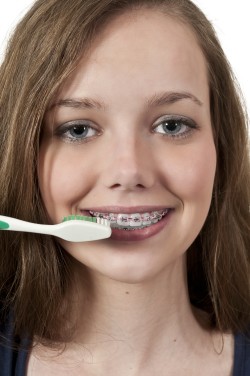Plaque control is an essential part of your oral hygiene routine and undergoing orthodontic treatment does not change that. Appliances, such as braces, which help straighten teeth can make it more difficult to keep them clean by blocking access to certain areas in the oral cavity. The build-up of excessive plaque can promote the development of harmful bacteria. Inherently, patients attempting to correct dental issues can complicate existing problems or even create others if precautions are not taken. There are some steps patients can take before and during treatment with braces to prevent plaque build-up and tooth decay.
Having Braces Applied
It is always best to visit your dentist before braces are applied. This allows them to clean your teeth thoroughly and ensure there is no plaque build-up left on teeth. It also gives the orthodontist the chance to start with a clean slate in your mouth. Once braces are placed, remember that scheduled visits to monitor and adjust the straightening process does not take the place of regular dental cleanings and check-ups.
Adjusting to Your New Braces
When you first have your braces placed, the orthodontist will instruct you on how to best care for your new appliance. There will be a short adjustment period while you are getting used to your new braces. It is important that you follow the orthodontic care instructions you are given and that you continue your oral care routine at home.
Brush and floss at least twice daily to remove plaque and rinse with water after every meal. This will help remove small food particles which may get caught in your braces. It will probably be necessary to adjust the way you brush and floss to access the entire oral cavity. You will also need to continue regular dental check-ups and cleanings, so the dentist can monitor for signs of decay.
For additional information or to schedule a consultation, contact our team today. Plaque control is essential to successful orthodontic treatment and your beautiful, healthy smile is our number one goal.

